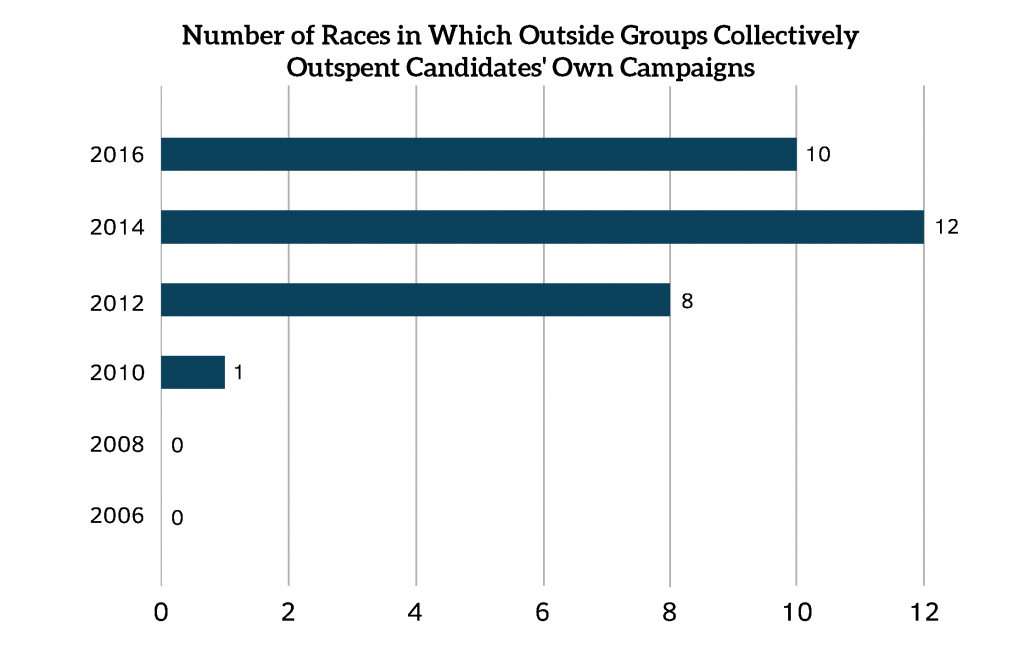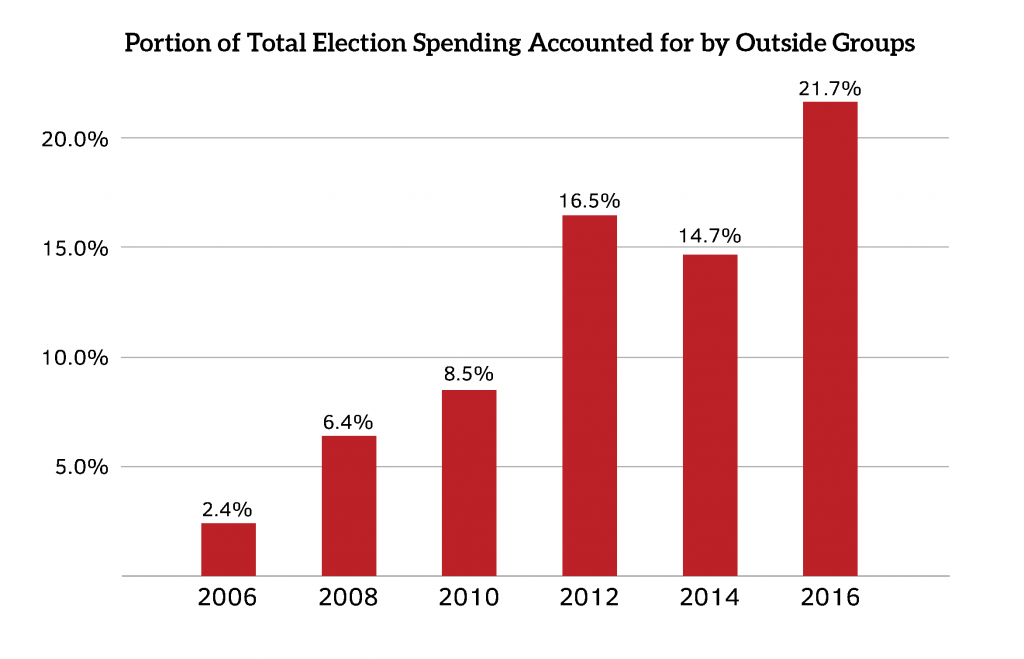Analysis
Four numbers that show how the FEC is MIA
Today marks the start of the third month since the Federal Election Commission (FEC) lost its ability to do its job due to the resignation of one commissioner. Three seats…
Analysis
A disturbing trend has emerged in our elections: Fewer and fewer races are truly competitive, but the ones that are see a surge of spending by outside groups.
As a result of the U.S. Supreme Court’s Citizens United decision and a related lower court ruling, outside groups are increasingly outspending candidates’ own campaigns, according to a new Issue One analysis of data from the Center for Responsive Politics.
Between 2010, when the Citizens United decision was handed down, and 2016, outside groups have outspent candidates in 31 congressional races.

Source: Center for Responsive Politics. Note: Outside group spending includes money spent by groups such as super PACs and “dark money” organizations, but not political parties.
The sums of money involved are staggering.
Overall, according to the nonpartisan Center for Responsive Politics, the 2016 presidential and congressional elections cost $6.4 billion. Outside groups — that is, super PACs and “dark money” groups — accounted for $1.4 billion of that sum, or roughly 22 percent of the total spending in the election.
A decade earlier, outside groups accounted for about 2 percent of the $2.9 billion spent during the 2006 midterm elections.

Source: Issue One analysis of data from the Center for Responsive Politics.
Unlike candidates, who are limited in how much money they can accept from any individual donor, super PACs and “dark money” groups have no limits on how much they can accept or how much they can spend.
In the landmark 1976 case Buckley v. Valeo, the U.S. Supreme Court rejected limitations on outside spending, based on the idea that spending that is “wholly” and “totally” independent from candidates is not corrupting. Yet the reality is that independent expenditures such as TV ads are often anything but independent.
As Issue One highlighted in our The Price of Power report, the threat of outside spending in elections often drives members of Congress fundraise dozens of hours each week, rather than focusing on their legislative duties.
Election observers currently expect about 50 U.S. House and U.S. Senate races to be highly competitive in 2018. Odds are that outside groups will outspend the candidates in at least one in five of these races — and possibly more.
Issue: Dark Money & Super PACs
Analysis
Today marks the start of the third month since the Federal Election Commission (FEC) lost its ability to do its job due to the resignation of one commissioner. Three seats…
Analysis
More than half of all freshman House members have formed leadership PACs — political committees that are frequently criticized as slush funds — according to an Issue One review of…
Analysis
Congressional and presidential candidates filed their latest campaign finance reports on Tuesday, detailing their fundraising and expenditures between July 1 and September 30. Here are some key numbers to know,…
